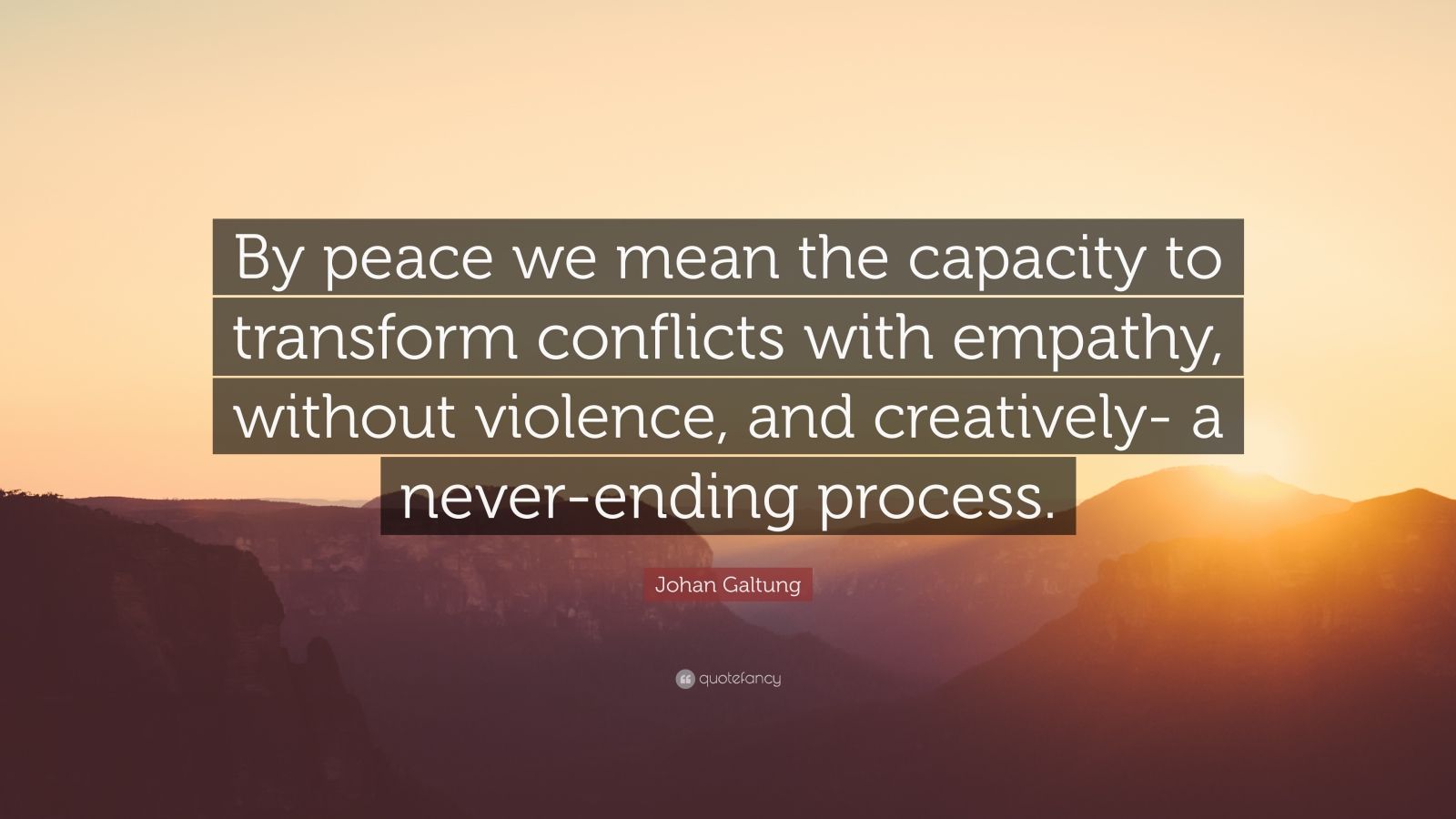

“the absence of violence, absence of war”, and positive peace, meaning “the integration of human society.” This definition of positive peace evolved in parallel with the reconceptualization of violence. In his editorial for the first of the Journal of Peace Research, Galtung outlined the binary aspect of the peace concept: negative peace, i.e. The work of Johan Galtung and the development of concepts of positive peace and structural violence remain its most notable contributions. Often linked, sometimes controversially, with pacifist and nonviolence movements, the discipline has since expanded substantially in both methodology and thematic reach, blurring the boundaries with other research fields such as critical security studies.

The creation of the International Peace Research Institute of Oslo (PRIO, 1959), the Journal of Peace Research (1964) and then the Stockholm International Peace Research Institute (SIPRI, 1966) represented landmarks in the institutionalization of this research field. Working at the intersection of several different disciplines, these researchers adopted a positivist, scientific approach motivated by a concern to legitimize their research with the realist school that held sway in international relations, for whom they were linked with the idealism of the inter-war period. Inspired by the normative ambition of advancing peace, initial studies of peace undertaken in the United States and Europe during the 1950s started out by undertaking a systematic analysis of war. Nonetheless, academic research has focused above all on seeking to understand conflict. These ideas were subsequently reworked, notably in theories of democratic (or liberal) peace – highlighting the fact that peace studies can draw upon a long history of philosophical and religious thought on this subject.

Montesquieu observed how the mechanisms of commerce advance peace in The Spirit of the Laws (1748), while Kant, in his essay Perpetual Peace: A Philosophical Sketch (1795), outlined the various conditions necessary to achieve perpetual peace between republics, based on universal reason and the institutionalization of interactions between states. It was not until the 1950s that peace studies emerged as an independent discipline, reinterpreting the definition of peace and violence and inspiring a range of intervention tools that are still in use today. Historically, the study of peace has focused mainly on peace treaties, like the Peace of Westphalia treaties (1648) that ended the Thirty Years War and established the international system based on the coexistence of sovereign states, the Congress of Vienna (1814) that ushered in the Concert of Nations, and the Treaty of Versailles (1919) ratified between France and Germany after the First World War. The social and economic inequalities endangering a more comprehensive form of peace are also denounced. During the 1950s, peace studies reinterpreted the definition of peace and violence: no longer was peace considered simply as the absence of conflict. Historically, peace has mainly been studied from the angle of its treaties.


 0 kommentar(er)
0 kommentar(er)
